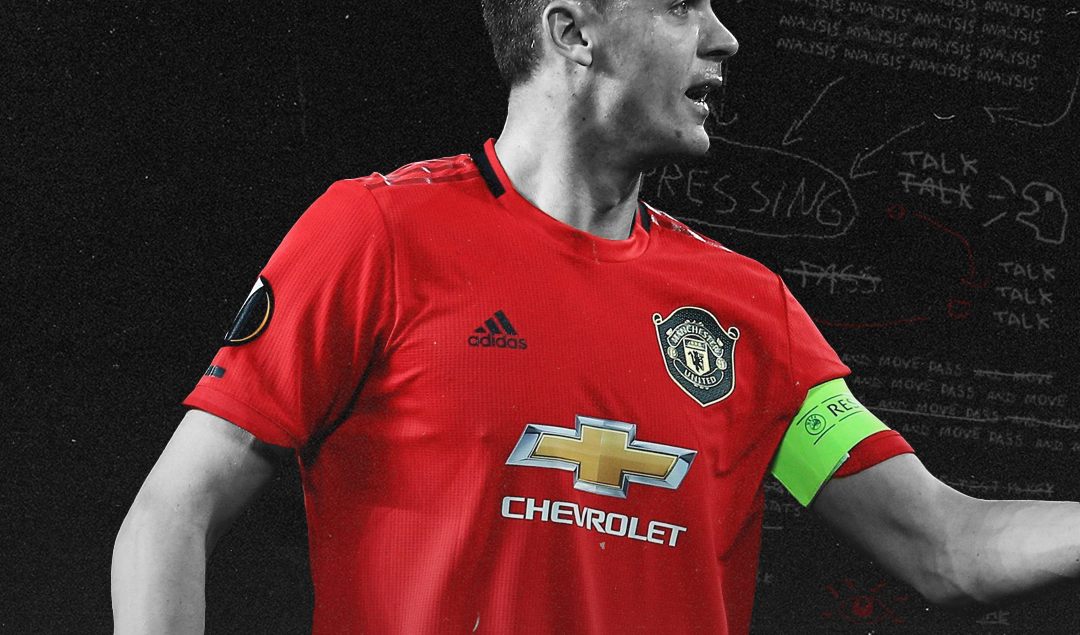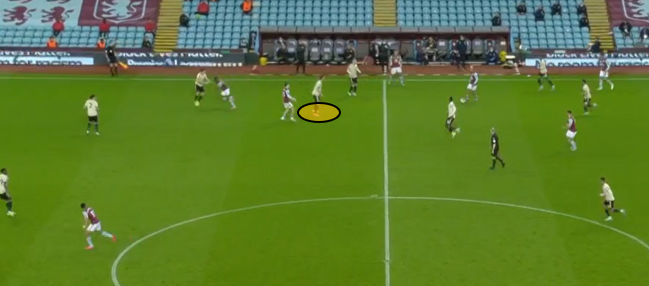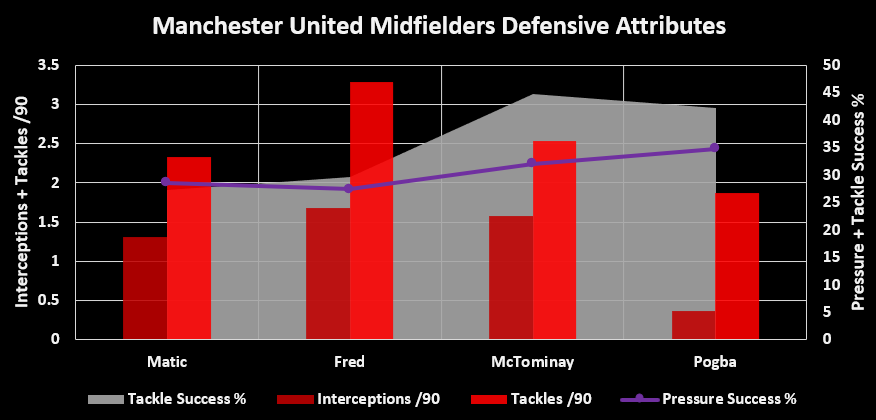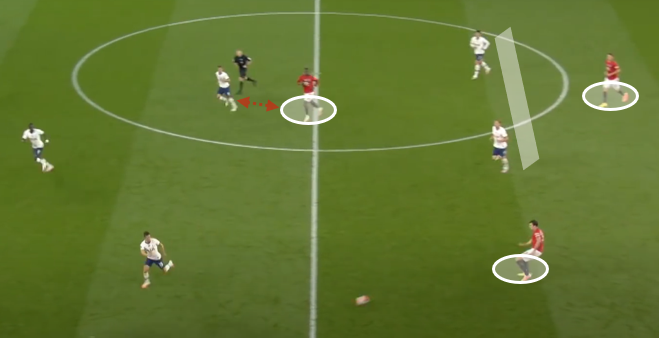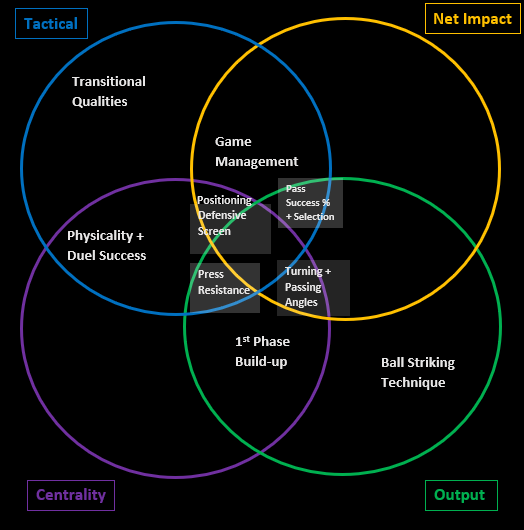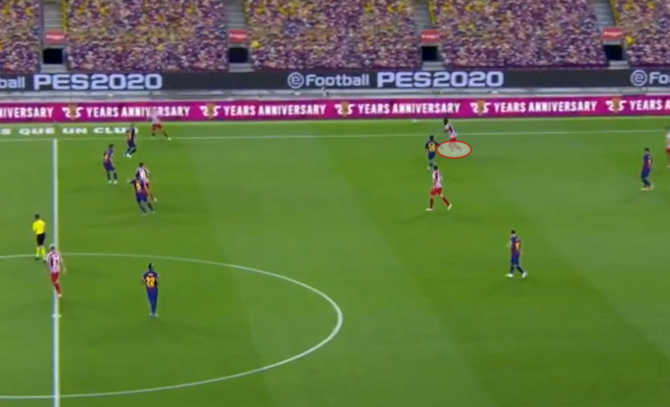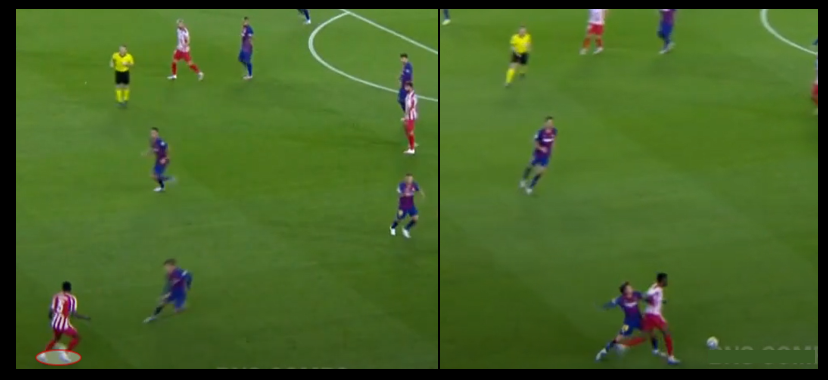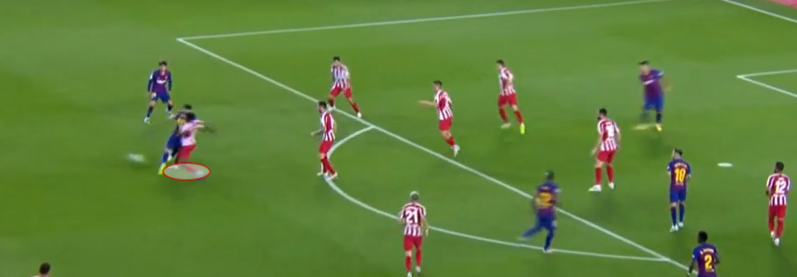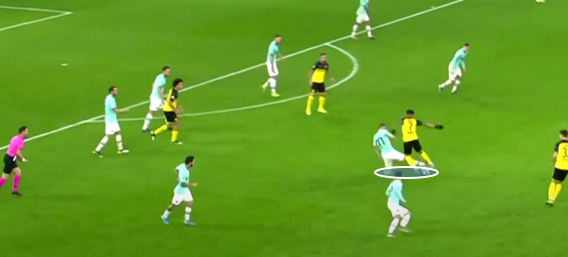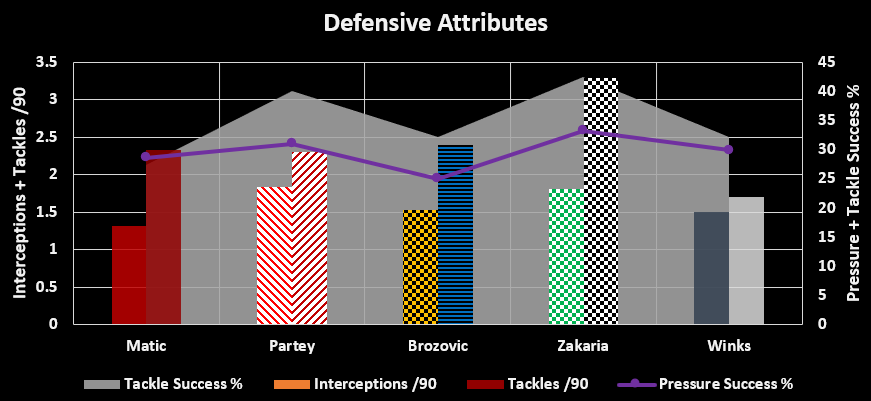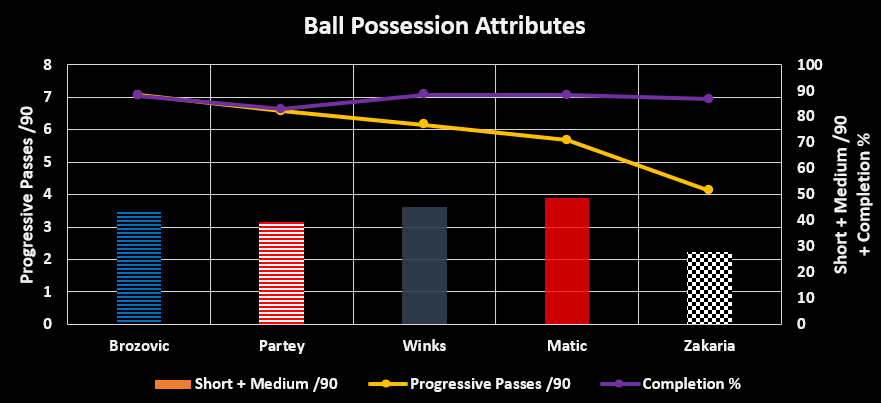Finding a Nemanja Matić Replacement
Manchester United have enjoyed a resurgence in the Premier League, embarking on a 14-game unbeaten run which ultimately saw them finish in third place. Although United generally persisted with a 4-2-3-1 for most of the season (excluding game-specific formations such as the 5-3-2 versus big teams or the diamond at Everton), sticking to the 4-2-3-1 has become even more prudent since Bruno Fernandes’s arrival at the #10 and Paul Pogba’s return to the team. The final piece to the midfield puzzle for this season, turned out to be Nemanja Matić.
There are a number of nuances to the double pivot role which make Matić a suitable player. Firstly, Matić played in a double pivot in Antonio Conte’s 2016/17 Chelsea, alongside N’Golo Kanté, in which both players shared a relationship where both would roam to a degree. They had the understanding to plug gaps left by the other should one roam to win the ball back or in ball possession.
Matić excelled at making interceptions and screening Chelsea’s defence from direct passes by opposition players. The Serbian provided all of this stability and defensive efficacy while playing a role that couldn’t be described as a ‘sitting’ role; a very impressive season. He still provides this defensive stability and centrality to Manchester United’s midfield.
Figure 1: Matić screens a pass into an Aston Villa player who is in an advanced position.
If we look further back to José Mourinho’s 2014/15 season, Matić started alongside Cesc Fàbregas in a double pivot with a ‘functional’ #10 in front of them — Oscar. His performances in this title-winning season also bears a lot of relevance when comparing to 2020 Manchester United; Matić was able to ensure Chelsea were a top defensive unit despite playing a player in Fàbregas who was deemed a comparative defensive liability.
Although Pogba offers more defensive stability (particularly in physical aspects) than Fàbregas, the impact of his shortcomings are often minimised by Matić’s natural game.
Figure 2: Defensive metrics for Manchester United midfielders, adjusted to Premier League midfielders’ percentiles. Data from FBref.
In terms of ball possession, there are a number of nuances to Matić’s current role at Manchester United. Matić is largely a first phase player, who drops centrally to join the centre backs in a back three during build-up. On occasion, Matić slots into one of the wider positions to create a progressive angle for United to progress the ball via.
For the most part, Matić being central allows one of Harry Maguire or Victor Lindelöf to make a progressive carry in the half-space. This isn’t dissimilar to one of Conte’s automatisms in 16/17, using César Azpilicueta to carry the ball uncontested into the final third. It isn’t a surprise that Matić is such a natural at facilitating these actions, even if at Chelsea he didn’t participate in such actions as they utilised a conventional back three.
Upon receiving in the first phase, Matić often seeks to first make a vertical pass to Pogba; if Pogba is screened or shadowed Matić simply lays the ball off to one of the centre backs (see figure 4). Their ability to bypass the first line of pressure as a three is depicted below in figure 3.
Figure 3: Matić forms a back three by dropping in centrally, allowing Maguire to make a carry past Bournemouth’s first line of pressure. The back three works particularly well versus a front two, as shown in the figure.
There are benefits to Matić’s build-up positioning when it comes to turnovers and defensive transitions too. The fact that he is always central while Pogba is able to roam wider to create overloads in 2nd phase build-up, means that in the event of a turnover, Matić is able to provide cover in vital central positions.
Figure 4: Matić drops in and having laid the ball off to Maguire as Pogba is shadowed by Giovani Lo Celso.
Finally, in attacking transition, Matić often makes immediate short passes to allow better distributors (i.e. Pogba and Fernandes) to make incisive passes before the opposition settle back into a better shape.
The Replacement Shortlist
When drawing up a shortlist, one must appreciate the core features to Matić’s game. That can be done through repeatable techniques such as the evaluation table below, and a Venn diagram of how Matić’s core skills fit into the context of his game at United.
In terms of Matić’s core skills, the ones most important to his role at United are positioning, defensive screen, physicality + duel success and first phase build-up. His lack of passing angles (he’s heavily left-footed) are a clear weakness to his game; an area where a replacement can certainly be an improvement.
Fortunately, Matić’s weakness in this area is somewhat minimised by his role; the onus to turn and create with pressure coming from 360⁰ is Pogba’s. When Matić is in possession, he normally has more time to make the angle for himself to pass.
Figures 5 and 6 help illustrate the metrics that we will use to evaluate the potential Matić replacements.
As a result, the shortlist consists of Thomas Partey, Marcelo Brozović, Denis Zakaria and Harry Winks. Marco Verratti fits the profile too but is completely unrealistic as a target.
Two other options include West Ham’s Declan Rice who seems to prefer a move to Chelsea, and the extremely promising Eduardo Camavinga who is just too young for a move to United and would be better off remaining at Rennes for another season before making a decision on his future.
Thomas Partey: The Ideal Skillset but Requires a Role Change
Thomas Partey from Atlético Madrid is an ideal candidate due to his current skill set and physical attributes. Additionally, he has Champions League pedigree, and a release clause of circa £43 million makes him attainable.
We can analyse a performance that is representative of his overall performance level to grasp an idea of his game. The performance chosen was versus Barcelona 30/06/2020; post-lockdown means that the performance takes into account the difficult circumstances and schedule thus is more representative of how he’ll perform in the season ahead.
Additionally, this was a game in which Partey performed well, but at a level that he consistently performs at, thus is representative of the player United would be purchasing.
Figure 7: Partey spraying a vertical pass after dropping wide right when Atlético have possession.
Although Atlético don’t build-up in such an organised manner as United, Partey showed qualities that are conducive of him performing in 1st phase build-up at United. These included dropping deep and wide (see figure 7), which shows that Partey could drop into one of the ‘wide’ roles in United’s auxiliary back three, and Partey showing good press resistance (see figure 8).
Figure 8: Partey makes a smart touch to beat a pressing player; by letting the ball come across his body and taking a touch past the player. This action conducive of receiving well on the half turn, as that is a similar movement.
Furthermore, Partey also shows immense acumen in defensive aspects, particularly in physical duels (aerial and ground-based), interceptions and tackling. Figure 9 highlights Partey’s clean tackling abilities, and intelligence to dispossess one of the deadliest dribblers of all time, Lionel Messi. This was performed in a dangerous zone too, suggesting that Partey can be very reliable defensively in a pivot role.
Disclaimer: we must appreciate that Partey plays as more of an #8 for Atleti, showing tendencies similar to that of a roaming destroyer. The positive of this is that we can expect his tackle success % to actually increase as he is performing less ‘risky’ pressures when sitting in a stricter position at United, but the negative is we must expect him to adapt his game. Whether he can adapt his game will be discussed later, as will the data behind it.
Figure 9: Partey anticipates Messi’s feint and makes a clean tackle.
Partey will need to adapt his role defensively to that of a player who must maintain positional discipline, sitting alongside Pogba. He must also adapt his game in ball possession; particularly in attacking transition.
The Ghanaian often makes a ball carry before making a pass in attacking transition, which is a very nice quality for Atlético’s game but not United’s. At United, he will be expected to make a quick pass to one of the two playmakers (Pogba/Fernandes) after a turnover in favour of United.
Fortunately, after a few weeks of being coached and playing in a new team, one shouldn’t doubt that Partey can adapt; he has shown himself to be a very streetwise and dynamic player.
Figure 10: Partey makes a carry after receiving the ball.
We can also attempt to quantify the intangible aspects to Partey’s game, in the table below. The qualities used are those of Matić’s (Partey adds some of his own, including different transitional qualities plus better locomotion).
Figure 11: Partey checks nearly all of the boxes, although he must improve in terms of his passing selection as well as precision on the ball.
To conclude on Thomas Partey, the writer believes that he is most certainly a viable option for purchase by a club entering the Champions League such as Manchester United, and the player is of more than the required quality to replace Matić; Partey is a potential upgrade.
Marcelo Brozović: Surplus to Conte’s Requirements?
Another top option for the Matić position is Marcelo Brozović of Inter Milan. The 27-year-old has reportedly been deemed ‘dispensable’ by Antonio Conte, thus generating more interest behind a potential transfer.
While it may seem odd that a player that Conte doesn’t see fit for his system is able to replace Matić who once himself played for Conte, it is worth noting that there are many other nuances behind the rumours, and the role Matić himself currently plays is different to his role at Chelsea in 2016/17. The writer estimates that he would cost circa £45-50 million.
In terms of performance, Brozović is extremely similar to Partey in terms of how he’ll require a slight role change in order to fit the Matić role. This notion is primarily referring to ball possession, where Brozovćc is largely a second phase player due to Conte’s system and automatisms.
In build-up, Inter primarily use their three centre backs in the 1st phase, with Brozović receiving higher up. Figure 12 helps to show how Brozović has good press resistance and is capable of receiving on the half-turn, as he evades pressure from two players.
Figure 12: Brozović receives and makes a half turn and press evading action, ultimately escaping pressure
Furthermore, as a result of Conte’s system, Brozović is found to make runs from deep, such as how an #8 would play in a 4-3-3. This is exemplified in figure 13 where due to Romelu Lukaku dropping deep, the system dictates that Brozović should make a vertical run to fill the space vacated by Lukaku. On this occasion Brozović takes the ball and makes a progressive carry.
Figure 13. Brozović receives from a Lukaku lay-off and makes a carry.
Both aforementioned actions show Brozović using his body to shield the ball and win duels or fight off pressing players; enhancing the notion that he is reliable in ball possession in central areas and comfortable under pressure from 360⁰.
Another benefit of Brozović in ball possession is how he is comfortable on both feet and is able to turn to manipulate good passing angles on both feet- he is a direct improvement upon Matić in this area. Figure 14 helps to show this.
Figure 14. Brozović making progressive passes on both feet: left shows a floated diagonal into space; right shows a well weighted through-ball to assist Lukaku
Although progressive passing isn’t an essential to the Matić role as the onus is on other players to perform these actions, it is no disadvantage for Brozović to have these passes in his locker.
From a defensive point of view, Brozović is extremely reliable. He is a strong tackler, very physical, and often wins duels. While Partey’s technique is more to stay balanced and make clean tackles, Brozović is more similar to Matić in technique; they use their body to force opposition players off balance and then win the ball back. This is similar to how Brozović uses his body to carry the ball in possession.
Figure 15. Brozović uses his body to force the ball away from an opposition player.
This technique also allows Brozović to frequently come into his own box to make clean recoveries, an added bonus to his defensive repertoire.
Figure 16. Brozović uses his defensive acumen and tackling technique to make vital recoveries.
Just like Partey, Brozović manfully defends his defensive zone; his intensity and focus are of a world class level. Figure 17 shows him successfully defending versus Jadon Sancho who is looking to create in the dangerous zone 14.
Figure 17. Brozović successfully tackles Sancho who is a top dribbler and creator, as well as very dangerous between the lines.
Brozović is also a useful player in both transitions. In defensive transition he often makes smart decisions and positions himself in zones that allow him to recover quickly yet still offer for the ball. He is also not afraid to make tactical fouls to prevent potent counters from the opposition after a turnover.
As done before, one can attempt to rationalise Brozović’s intangibles in order to compare to Matić and Partey:
Figure 18: Brozović also stacks up well in most areas, but his ability in the first phase of build-up remains a question mark in a league as fast-paced as the Premier League.
Just like with Partey, it is prudent to say that Brozović may well be an upgrade on Matić. Brozović offers more press resistance and turning + passing angles than Matić, as well as similarly good game management.
One question mark is over his abilities to play in the first phase, as Conte’s system doesn’t allow him to show his abilities in this role. The writer suggests that Brozović is a cultured enough player to adapt well, however.
The Data and Comparisons
One can use data to provide evidence for points created about certain players; and by using per 90 stats this helps to provide a realistic indicator of season-wide performance levels.
Figure 19. Defensive metrics for the shortlisted midfielders in the 2019/20 league season. For key, colours represent Matić’s metrics; simply compare for other players as the order is the same. Data from FBref.
Assuming Matić is the baseline for the shortlisted players, from figure 19 we can see that all players bar Harry Winks are either performing at a similar level or a higher level than Matić.
Denis Zakaria provides the most tackles per 90 and the highest tackle success %. Brozović and Partey are similar performers, but Partey is more reliable in both pressure and tackle success % (which is somewhat of a surprise as he roams more).
From this data alone, we can discount Winks as a top Matić replacement option; he simply doesn’t have the defensive skills required to play in a pivot with Pogba. Moreover, even if he was capable of filling Matić’s shoes on the defensive end, Tottenham Chairman Daniel Levy would demand an unbelievably bloated fee to part with him.
Figure 20. Non-possession adjusted ball possession metrics for the shortlisted midfielders in the 2019/20 league season. Ranked by progressive passes per 90. Data from FBref.
This data is ranked by progressive passes per 90; which helps to contextualise how both Partey and Brozović play in more progressive roles than Matić currently does. Fortunately, both have a similarly high pass completion % despite playing a more expansive game.
Partey’s completion is slightly lower due to playing more vertical (risky) passes in transition, as this is his role under Diego Simeone. Additionally, he simply makes less passes per 90 due to this role, thus his short + medium total is lower as a result. Winks is no longer relevant due to the aforementioned defensive shortcomings, and Zakaria is largely unimpressive; suggesting that he isn’t ready to play in United’s build-up structure.
Furthermore, Zakaria has recently experienced a severe injury and upon watching, is too raw in ball possession, a notion which the data is in concurrence with.
Conclusion
Disclaimer: this section is more subjective than before. The writer would suggest, based on the evidence previously stated that Thomas Partey and Marcelo Brozović are both upgrades upon Nemanja Matić, thus by default both are adequate replacements. This can’t be said for Denis Zakaria who is too raw (and currently injured), or Harry Winks who falls very short in key defensive aspects.
One can only guess how either of Partey and/or Brozović will adapt to the more strict pivot role at United, alongside Pogba, but off the basis of the intelligence and pedigree both players are performing at, the guess can be an educated one: both players can adapt well.
With Matić aging and United lacking a serious candidate to sit alongside Pogba, a move for Partey or Brozović would be an astute one, given how both are entering their prime years, and are available for good prices. The onus is now upon Manchester United to be proactive and make the transfer.
By: Jamie Scott
Featured Image: @GabFoligno
